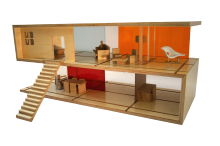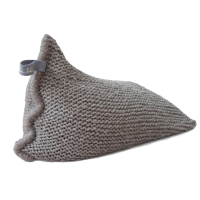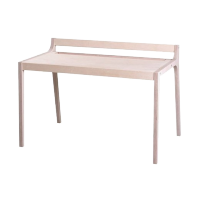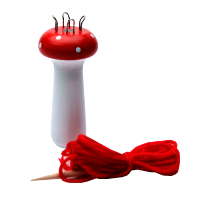Don’t you just wish there was a way of having toys magically disappear when friends or family turn up? Well, the modernist inspired Qubis Haus designed by Amy Whitworth is just what you (and your child) have been dreaming about!
This ingenious playhouse has solid wood and perspex sliding wall dividers and stairs; simply slide the dividers out from the table and it transforms into a super cool coffee table.
With an acknowledged nod to Bauhaus, Mies van der Rohe and Corbusier, this multi-functional piece of furniture will have everyone in your family happy
The winner in the 2012 Boost product design competition – a platform for new design talent sponsored by London’s Southbank Centre – the table is made from solid birch ply wood and is available both as a ‘two-tier’ original table and a ‘C-shape’ table. And – making it just that much more mummy-, daddy- and child-friendly – the grooves for the sliding panels are also designed to securely hold an iPad.
There are also sets of toy furniture and people to go with the table, all made from locally grown, sustainable oak and hand crafted into various styles of building blocks with embedded magnets, magically transforming into pieces of modern furniture with a simple click. Hand crafted in Wales, the oak blocks have a woody aesthetic, with knots and imperfections left in to emphasise the authentic character of the material.
Good For… spatial development, imaginary play, story telling, cooperation, responsibility, problem solving (and of course, negotiation skills when it comes time for the play house to return to coffee table or vice versa)
Keep in Mind… The fun of play might mean it is unlikely to ever return to its coffee table origins – at least for a decade or so
What Kids Love Playtime centre stage in the family home – what could be better
What Parents Love That this is a two-in-one concept with one of the two being a hugely practical piece of interior furniture
Awards Winner of Boost Product Design Competition (2012)
Designer Details Designer Amy Whitworth had a career in classical and contemporary dance, performing throughout Europe and the United States, before converting a large 1930ʼs Dutch cargo barge into a contemporary art gallery. After her children were born, she branched out into design; her ideas are influenced by the aesthetics of modern art and architecture and the playfulness of children’s toys.





